|
|
Results of S. Baffioni et al., presented at Physics Meeting, 05 December 05
The electron energy measurement in the ECAL involves algorithmic corrections for the cluster containment as well as corrections to account for the large amount of energy radiated in the Tracker material. Such corrections are better done separating the observed track-cluster patterns into classes, which in turn can serve as basis for electron quality estimation. From the corrected ECAL measurement, the track momentum and their associated errors, a combined estimate is constructed to obtain the final electron momentum at the vertex.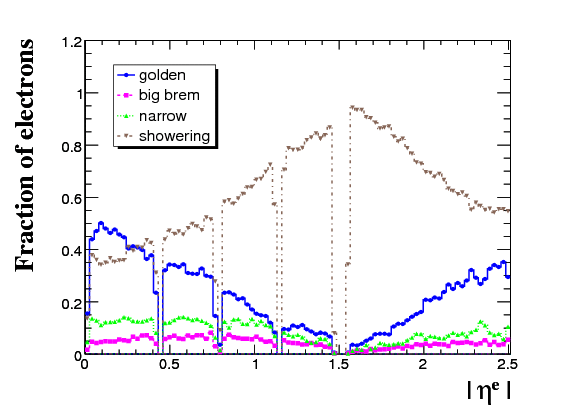
|
Fraction of electron population in the different classes as a function of the true pseudorapidity for initial energies between 5 and 100 GeV. |
| GIF EPS |
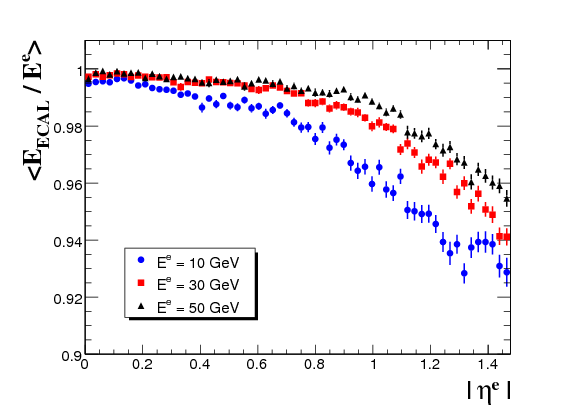
|
True energy reaching the ECAL front face as a function of the
pseudorapidity for electrons of 10, 30, and 50 GeV energy in the ECAL
barrel. |
| GIF EPS |
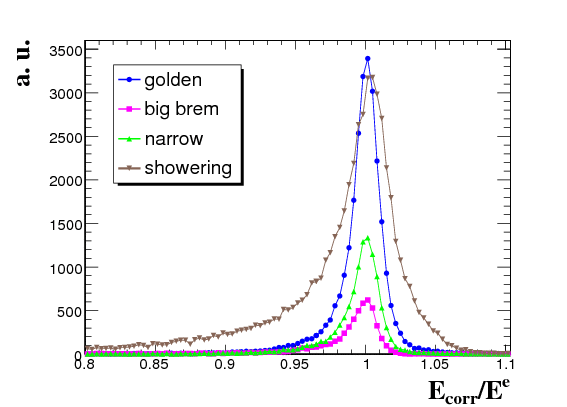 |
 |
On the left, distributions of the corrected energy normalised
to the true energy for the different classes for electrons in the ECAL
barrel. On the right, the same distributions for electrons in the ECAL
encaps. |
| GIF EPS | GIF EPS |
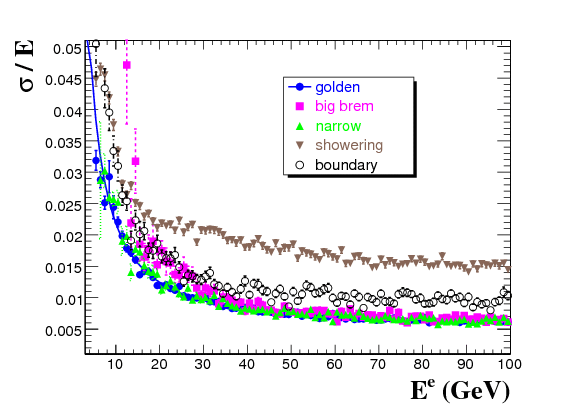 |
The resolution of the E measurement as a function of the true
electron energy for the different classes and for electrons in the ECAL
barrel. A fit of the resolution for the golden class using standard
calorimetric energy resolution function gives values well compatible
with the one obtained in the test beam. |
| GIF EPS |
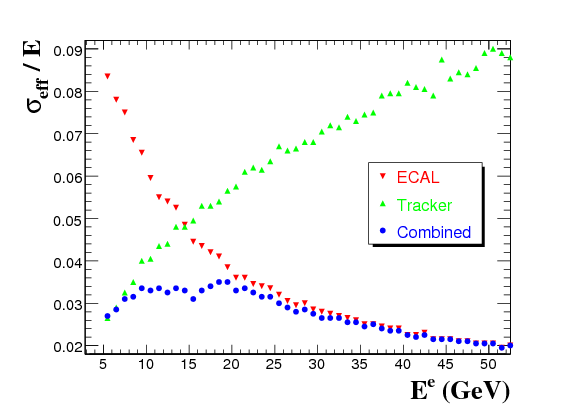 |
The resolutions as measured by the relative effective RMS of
the corrected supercluster energy (downward triangles), of the
reconstructed track momentum at origin (upward triangles) and of the
combined el;ectron momentum estimate (circles) as a function of the
electron incident energy for electrons in the ECAL barrel. |
| GIF EPS |